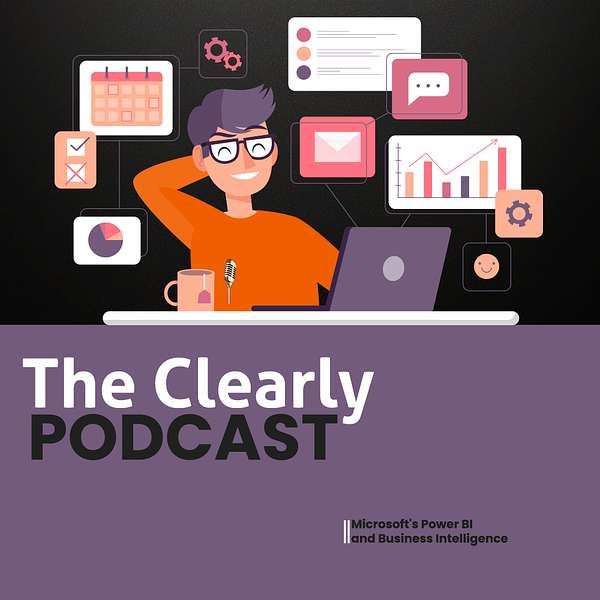
The Clearly Podcast
The Clearly Podcast
Client Resourcing on Projects
Today's discussion focused on how customers should resource projects with their own people. Often, projects are under-resourced with the expectation that consultants will do all the work, which is not effective for long-term success. Clear communication and proper resource allocation are essential.
Clients frequently struggle to balance day-to-day tasks with project commitments. It's crucial for management to empower their teams to prioritize project work. People involved in the project should be given the time and authority to make necessary decisions.
Some individuals are naturally better at balancing multiple tasks, but this can be a learned skill through experience. Training and team-building are important, especially if the team hasn't worked together before.
When issues arise in a client project, it's important to address them quickly, ideally through the project manager. Clear communication from the start, including defining roles and responsibilities, can prevent confusion and delays. Setting expectations upfront about client involvement can help ensure smoother project execution.
Testing is a critical part of the process but is often neglected. Clients need to actively participate in testing to ensure the product meets their requirements. Documentation, although tedious, is also essential for project success.
To summarize, clients need to assign the right people, free up their time, empower them, communicate clearly, and actively participate in testing. Training and setting expectations are crucial for effective project resourcing.
You can download Power BI Desktop from here.
If you already use Power BI, or are considering it, we strongly recommend you join your local Power BI user group here.
To find out more about our services and the help we can offer, contact us at one of the websites below:
UK and Europe: https://www.clearlycloudy.co.uk/
North America: https://clearlysolutions.net/
Andy:
Today we're discussing how customers should resource projects with their own people. We often see projects under-resourced, with the expectation that consultants will do all the work. This is a bad idea if you want long-term success. Getting this right is crucial, but I understand it can be challenging. Shailan, you had some thoughts on this?
Shailan:
Absolutely. Often, clients are too busy to assist with understanding business requirements. How many times have we heard "I'm too busy"? Clients think they can help with the project while handling their day-to-day tasks, but they don't always carve out enough time. This misunderstanding can lead to issues with testing and deploying new software or reporting systems. Many times, clients don't realize they need to free up time or fully commit to the project.
Andy:
Right. Communication is key. Often, people are given tasks without clear communication, leading to confusion and delays. Tom, how do you handle this?
Tom:
It's understandable for clients to expect consultants to handle everything since they're paying for the expertise. However, a well-specified and tested product requires client input. Management must empower their teams to prioritize project work over day-to-day tasks. Without this permission, project work often slips. Clear communication from the top is essential.
Shailan:
Empowerment is crucial. Individuals should feel capable of making decisions. At project kickoffs, roles, responsibilities, and escalation points should be defined. People should understand they are empowered to make decisions to keep the project moving.
Andy:
Are some people naturally better at balancing day jobs and projects?
Tom:
Yes, some are better at juggling tasks, but it's a learned skill. Experience in smaller projects can help build these skills. Sometimes, you need specific individuals, even if they're not the best at switching between tasks.
Andy:
Is there an aspect of training and team building involved?
Tom:
Yes, especially if the team hasn't worked together before. Building a cohesive team is important for project success.
Andy:
When you're in a client situation and things aren't getting done, how do you communicate this without causing defensiveness?
Shailan:
Start with the project manager. If there's no project manager, clearly communicate the roles and responsibilities at the project's outset. Escalation points should be used if necessary. It's important to address issues quickly to avoid delays.
Tom:
Talking to the project sponsor can help. Emphasize that delays cost money. Clients should understand that their engagement saves money in the long run. Setting these expectations upfront can help.
Andy:
Clients often expect consultants to handle everything. How do we make it clear that client participation is essential?
Tom:
Include expectations in the statement of work. Make it clear that consultants need client input to deliver the best product. If clients don’t test and provide feedback, the final product may not meet their needs.
Andy:
Testing is critical but often neglected because it's boring. Clients need to understand that testing ensures the product meets their requirements.
Shailan:
Consultants don't know the client's data as well as the client does. Testing can reveal missing requirements or changes needed. Clients must participate in testing to ensure everything is correct.
Andy:
Documentation is another area that's often overlooked but essential when needed.
Tom:
Absolutely. Documentation, like testing, is vital even if it seems tedious.
Andy:
To summarize, clients need to assign the right people, free up their time, ensure they are empowered, communicate clearly, and participate actively in testing. Training and setting expectations are crucial.
Shailan:
And be prepared for changes and ensure responsibilities are clear, even if people move on.
Andy:
Great points. Communication, training, and participation are key. Have we covered everything?
Tom and Shailan:
Yes, we think so.
Andy:
Alright. Next week, we'll discuss the top 10 things not to say to a client. Thanks, everyone.
Shailan:
Thanks all.
Andy:
See you next week!